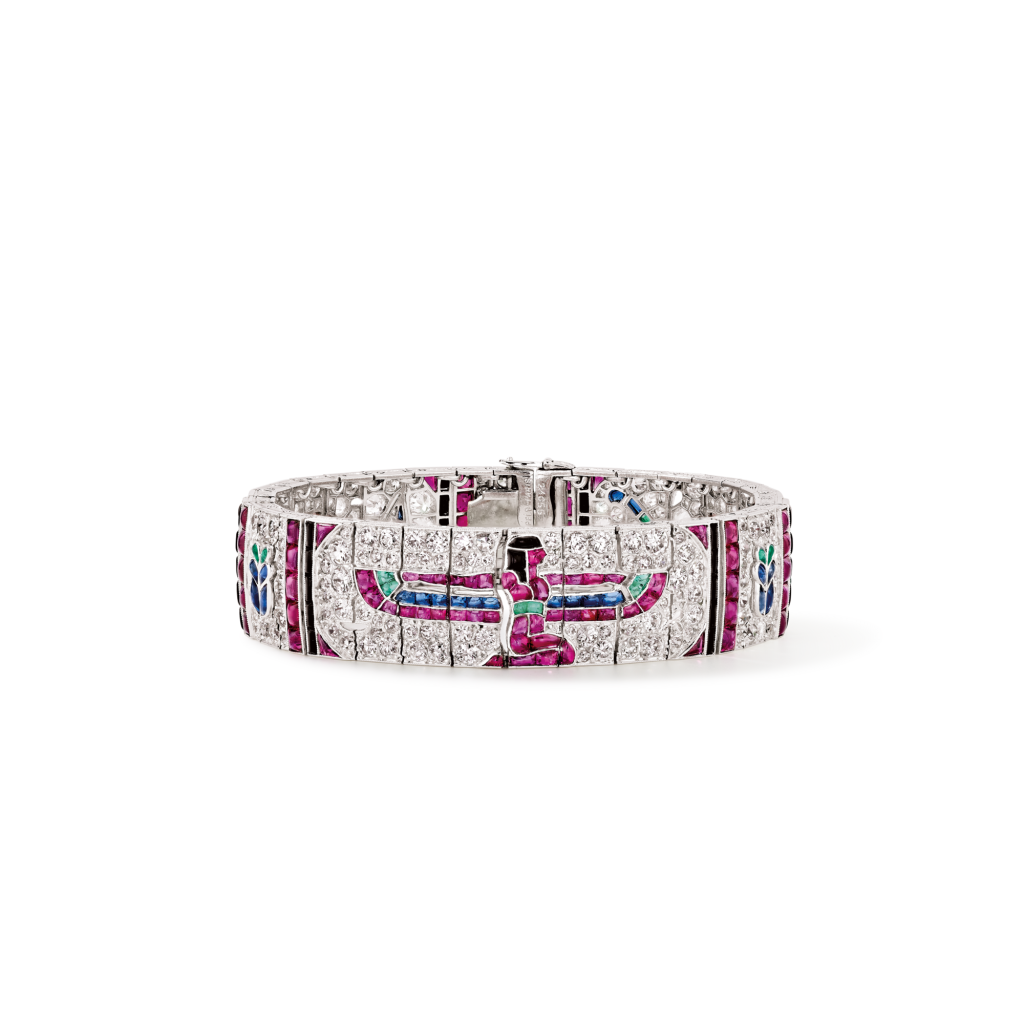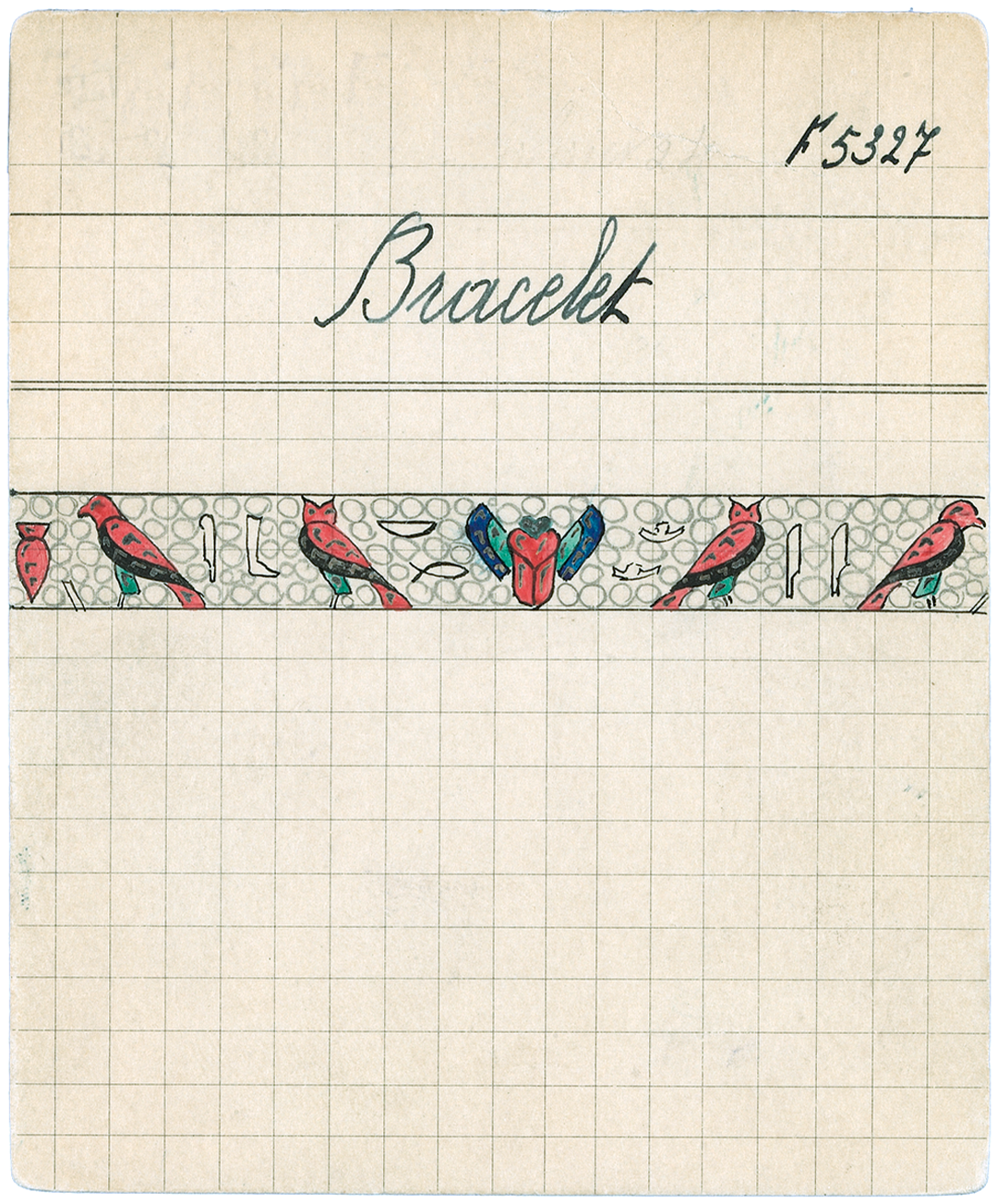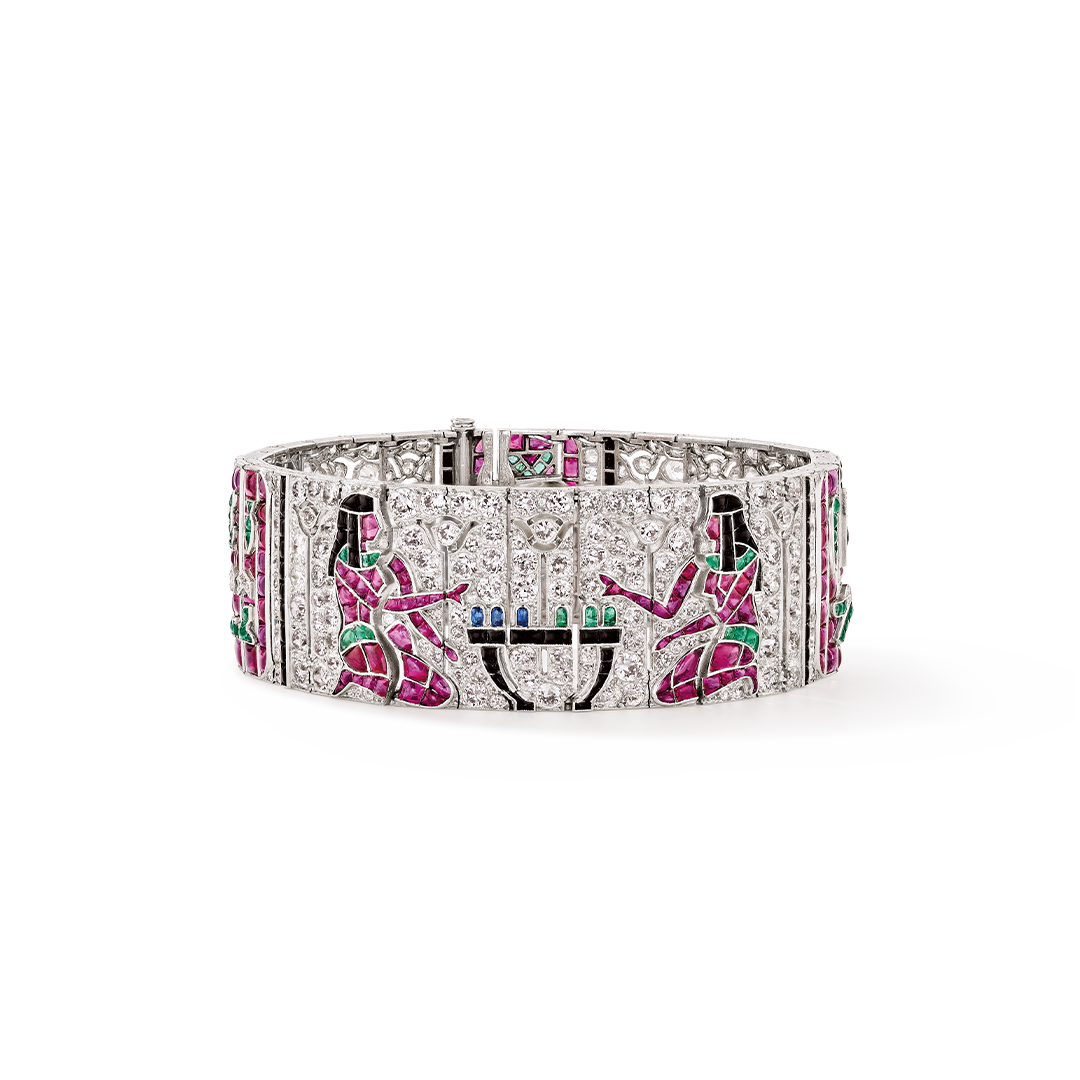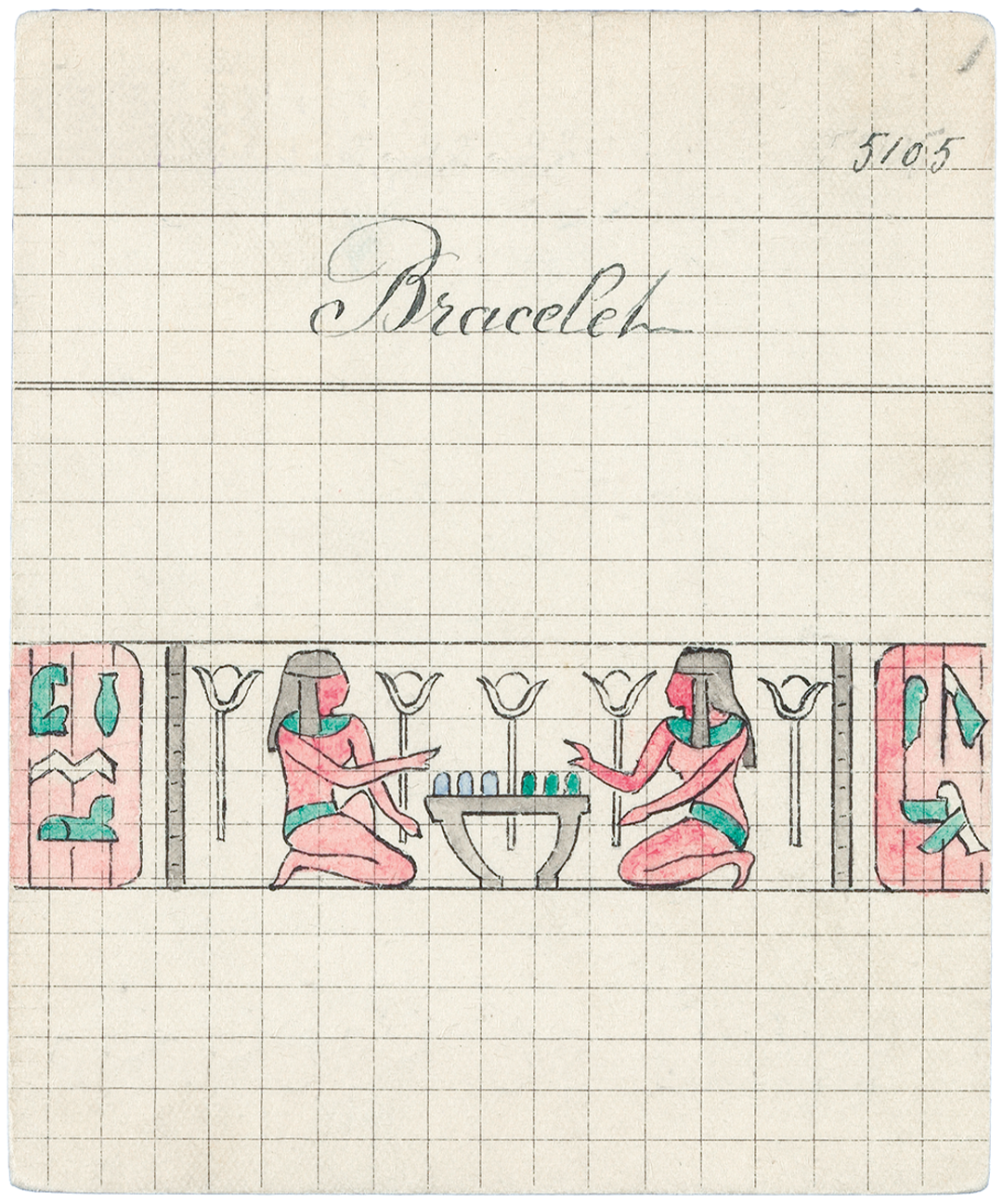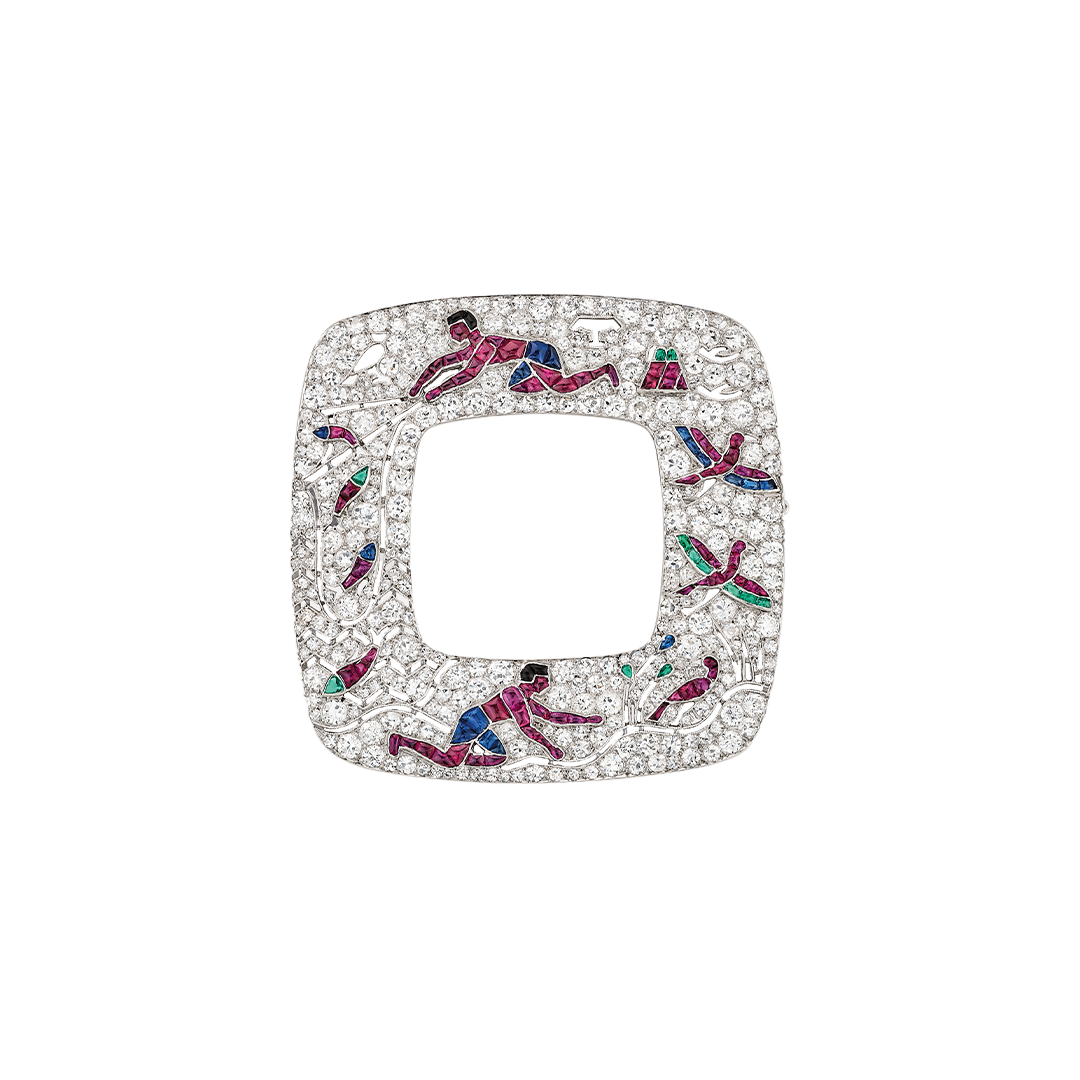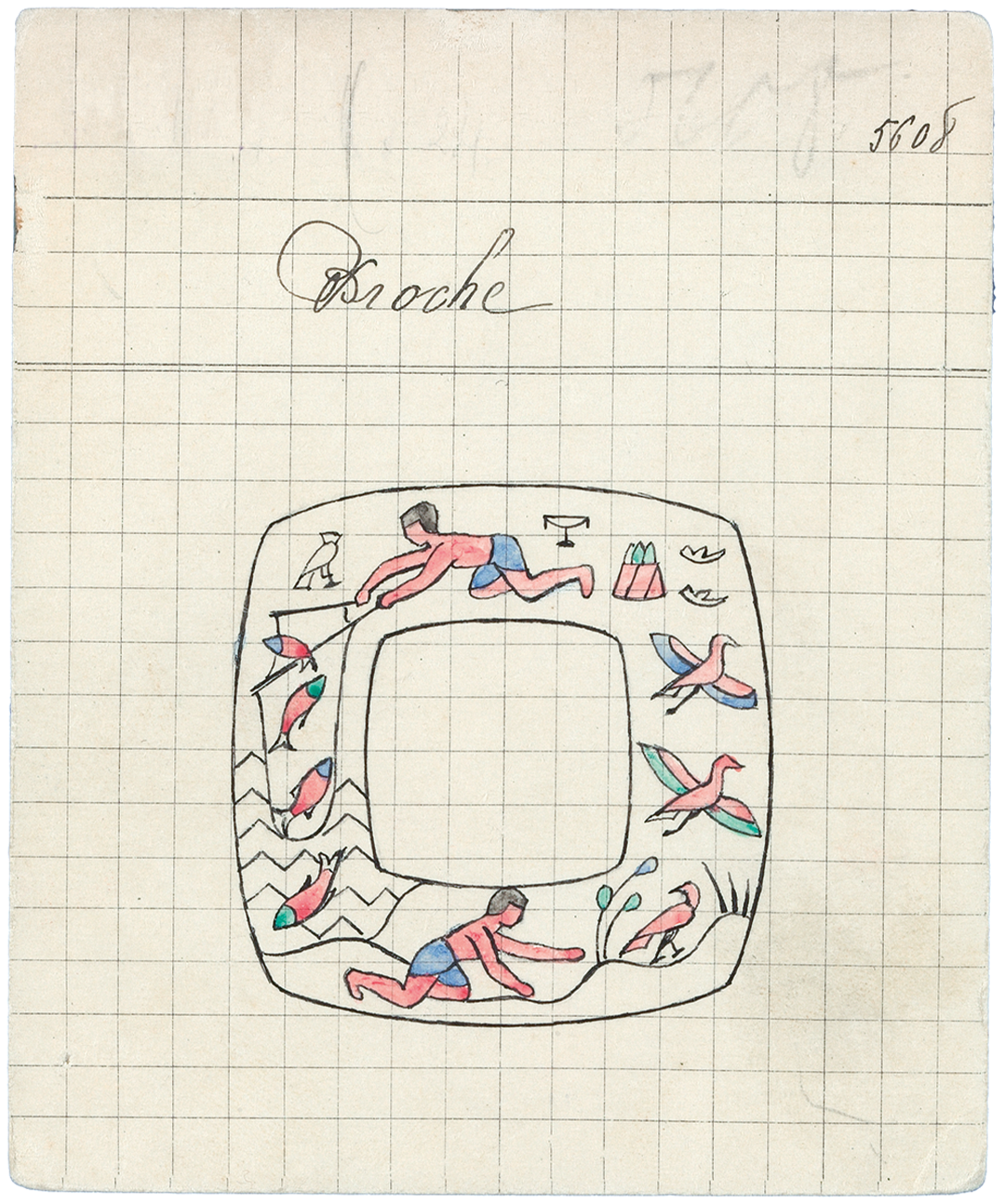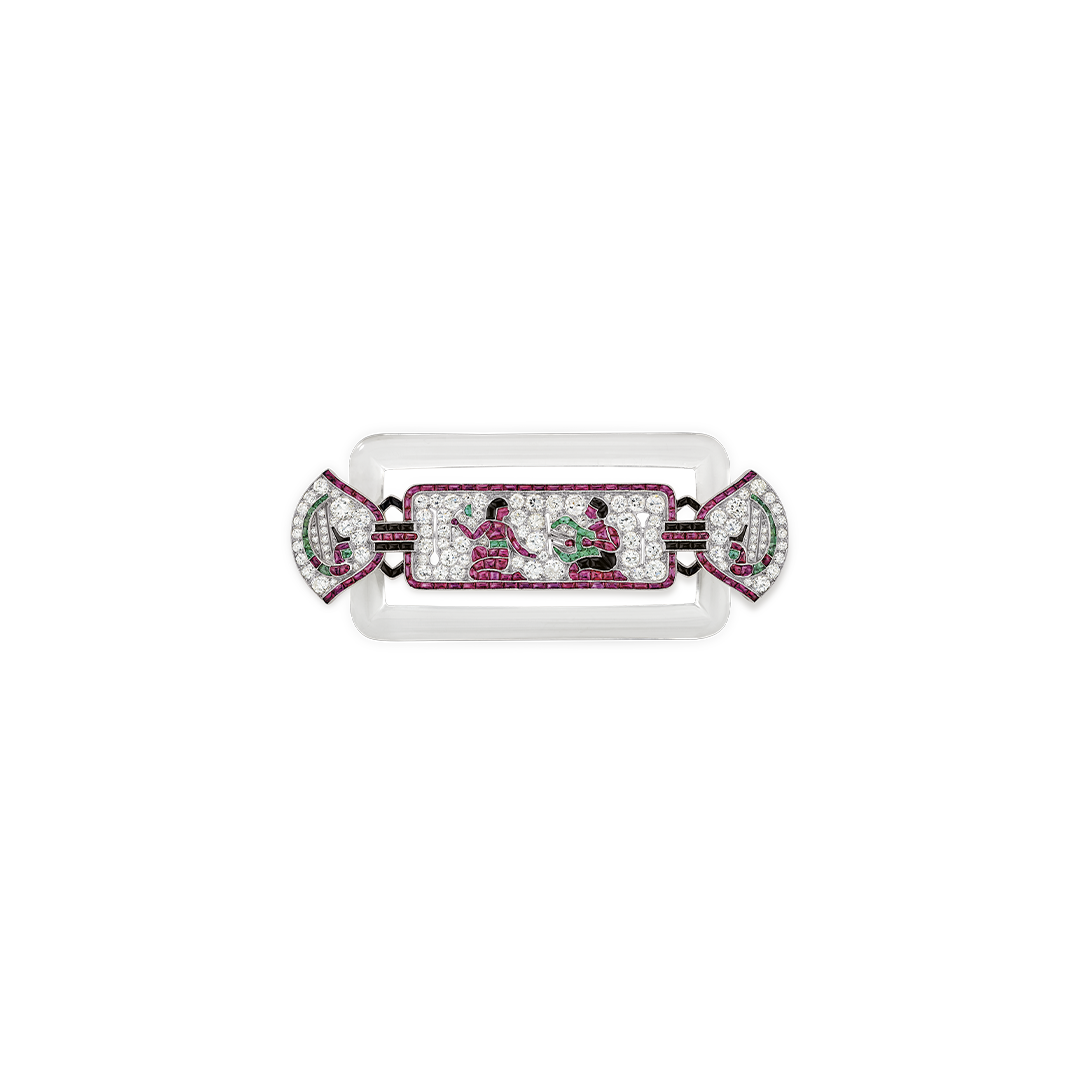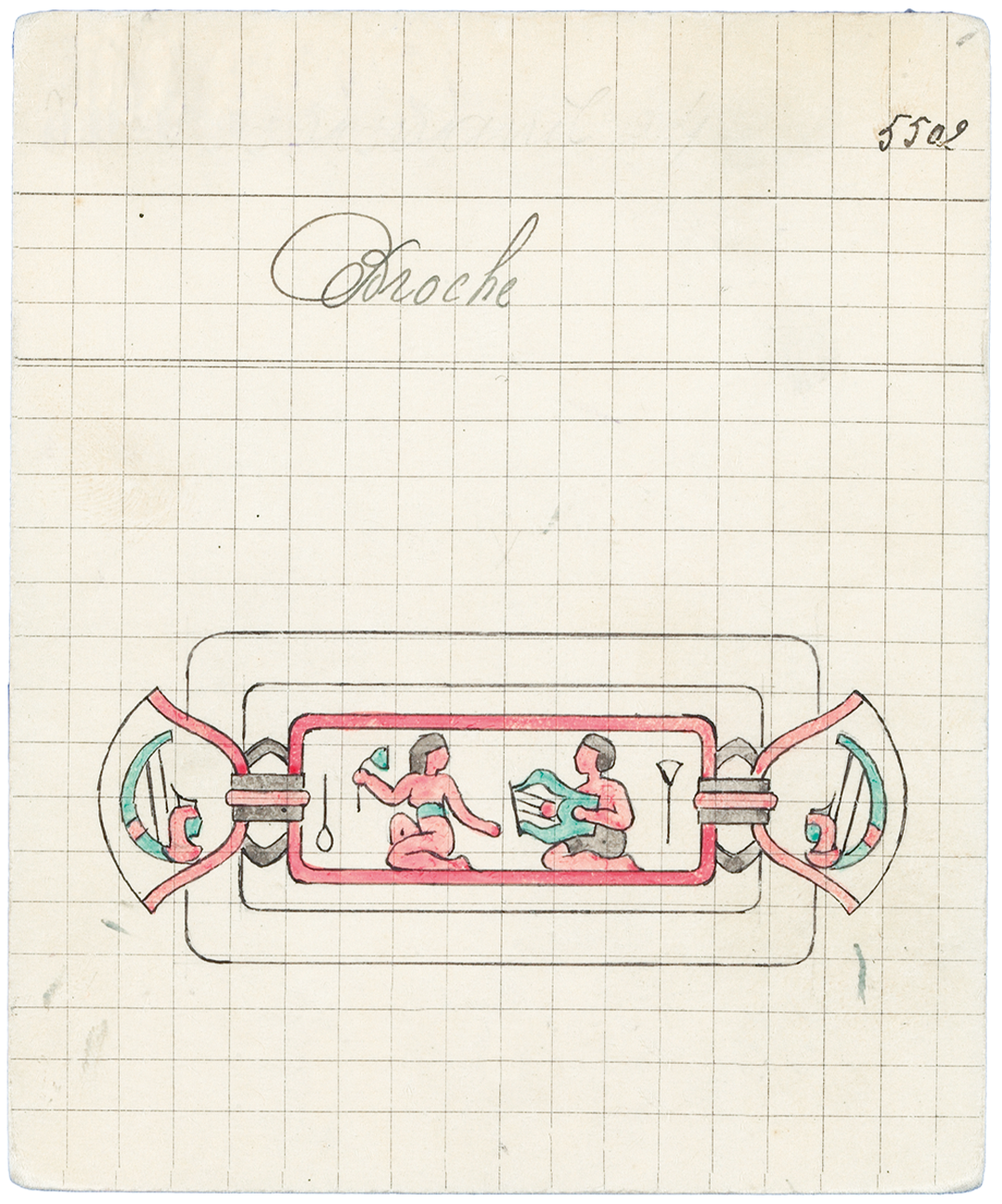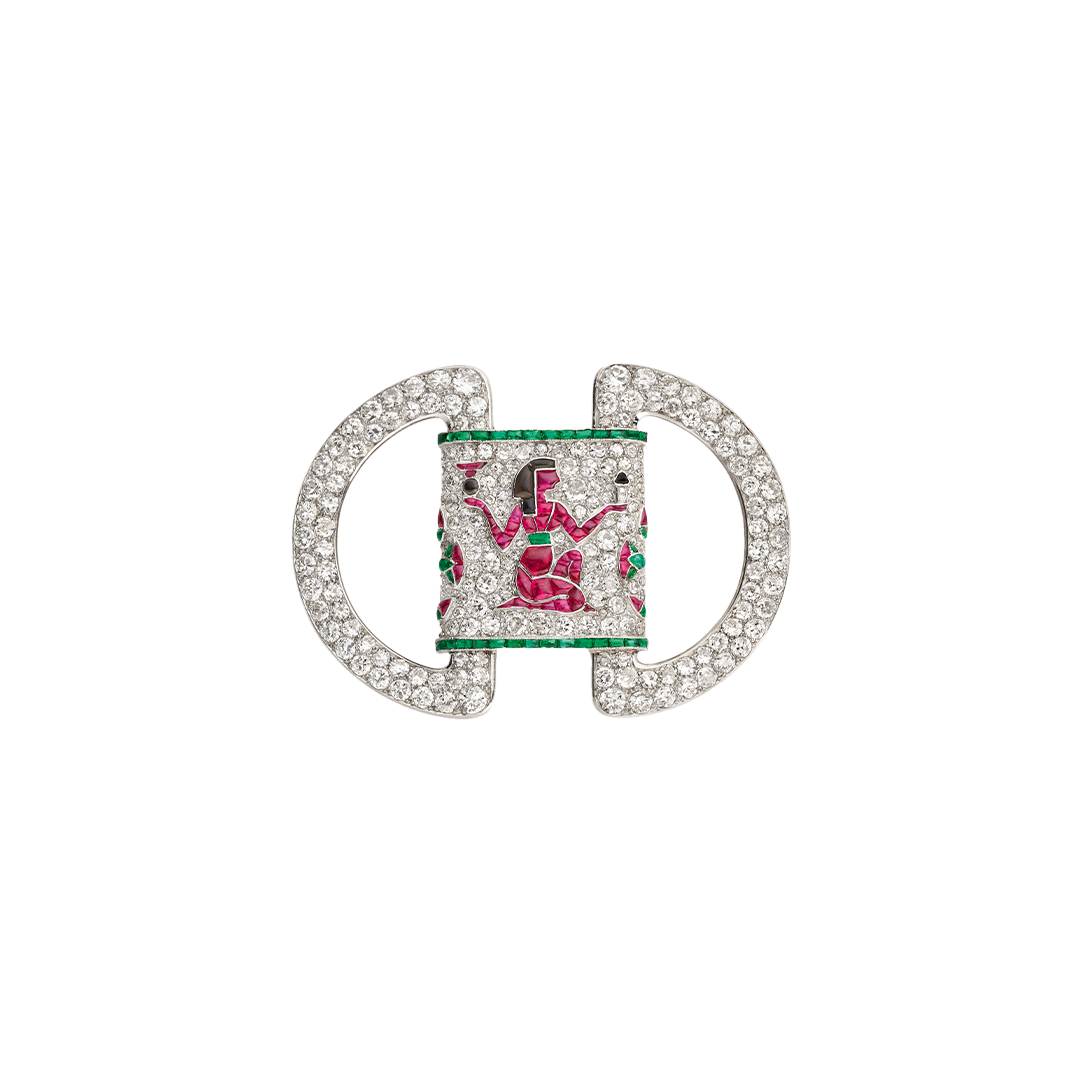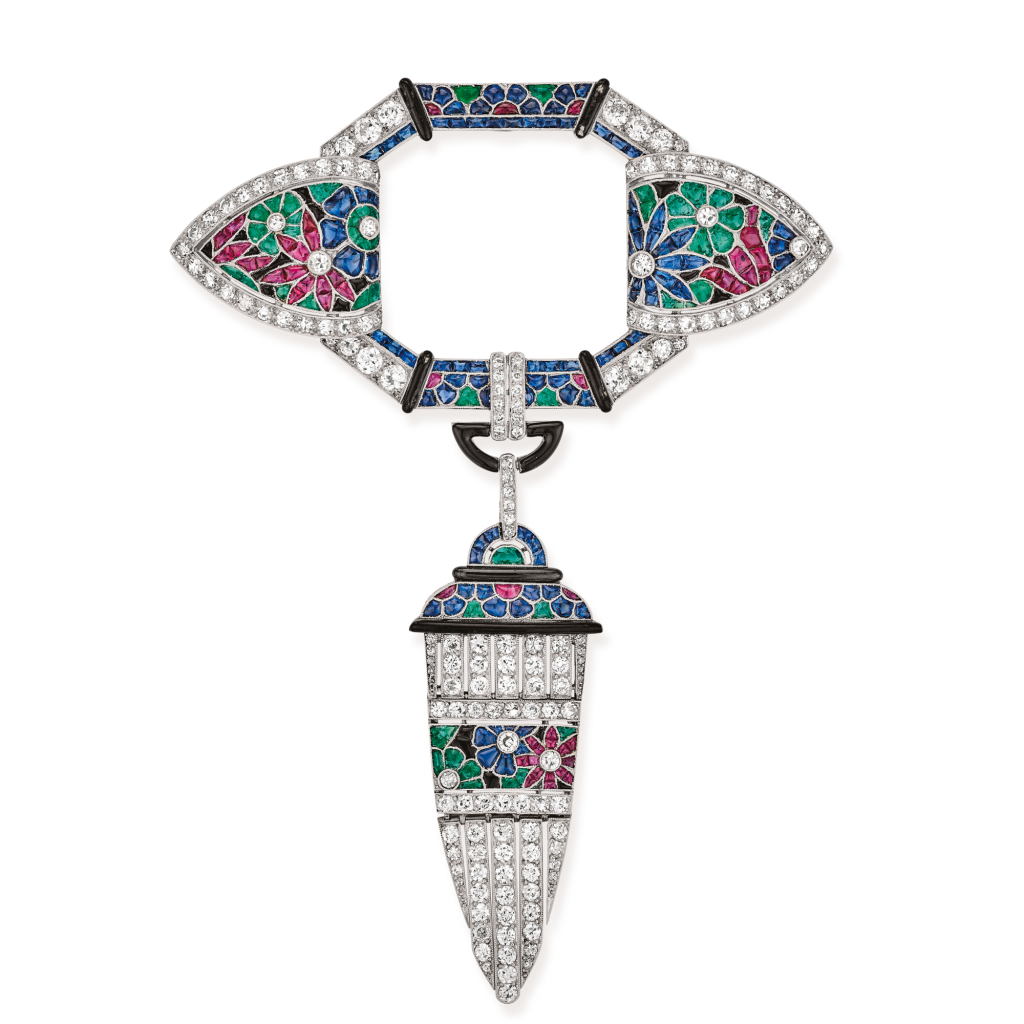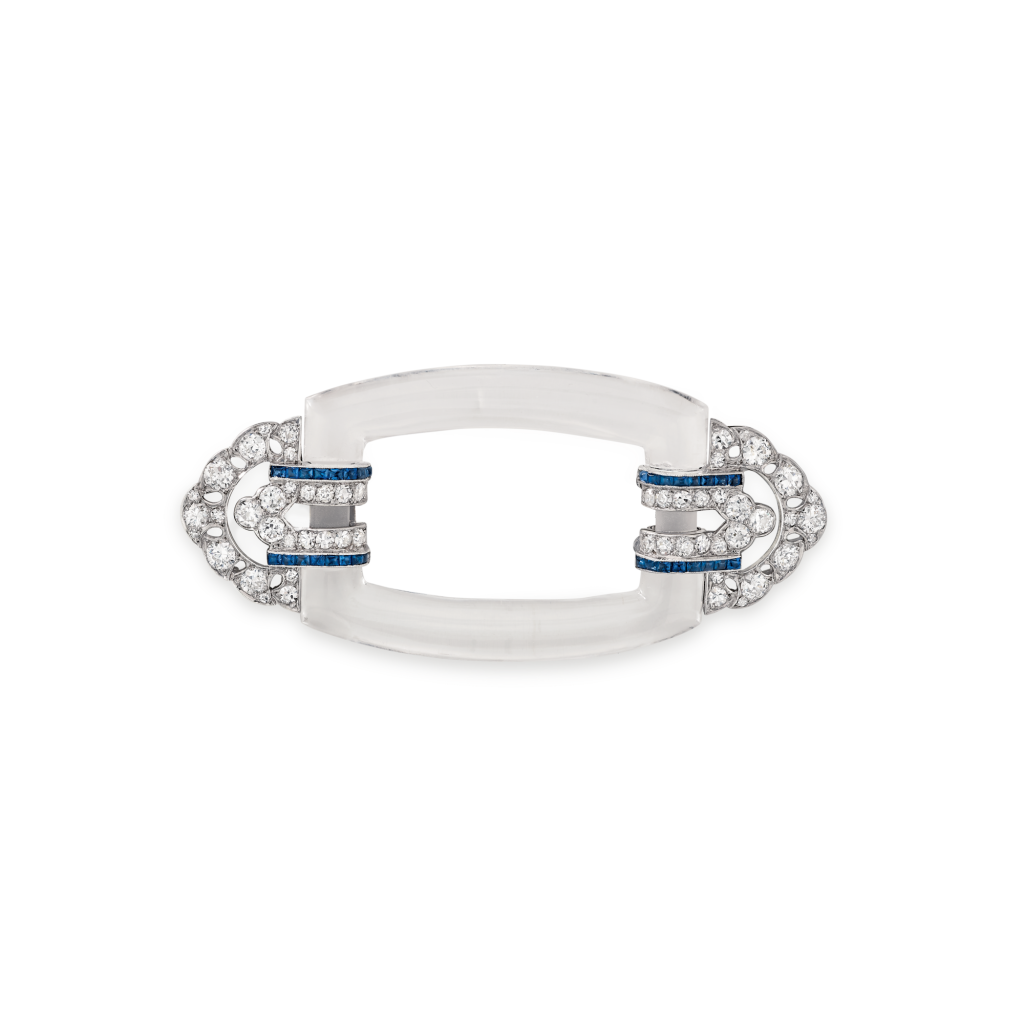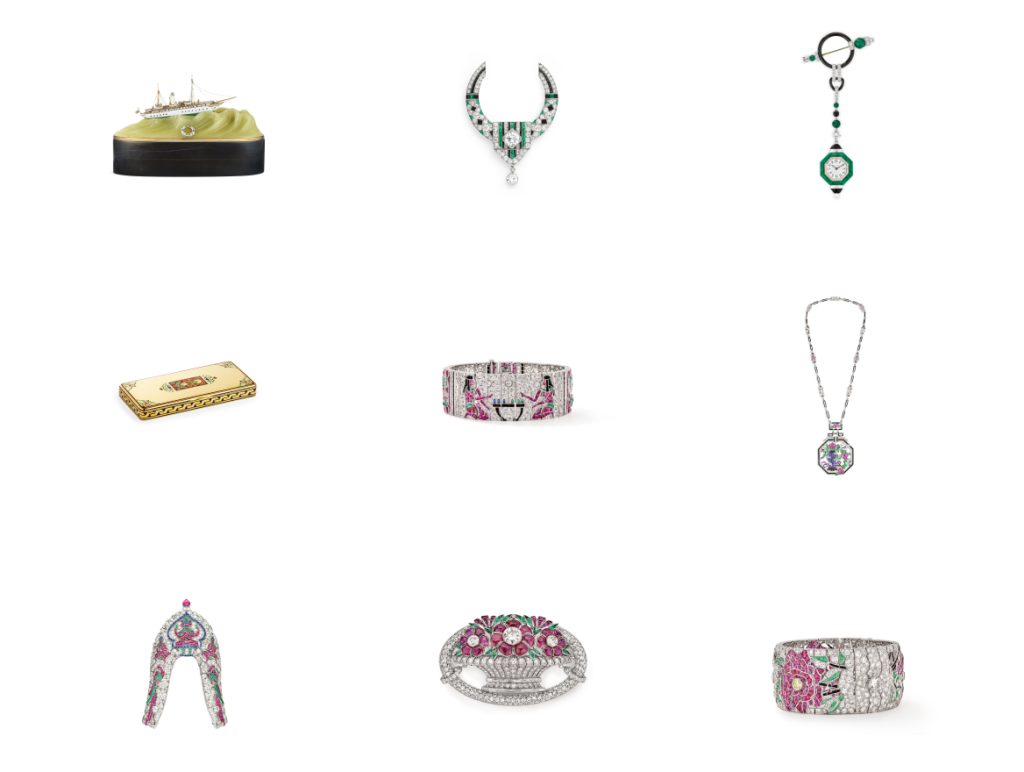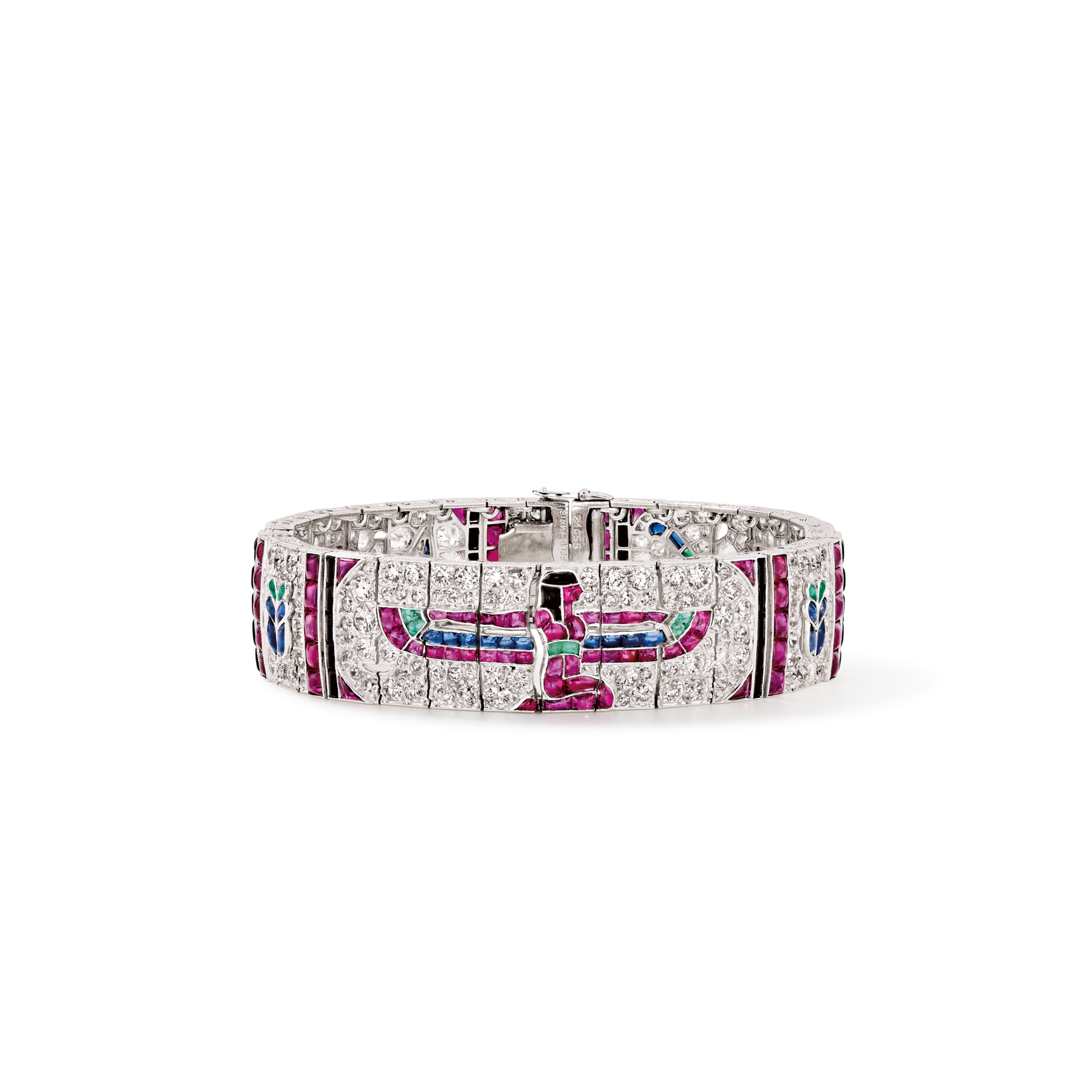
Egyptian Pattern bracelet

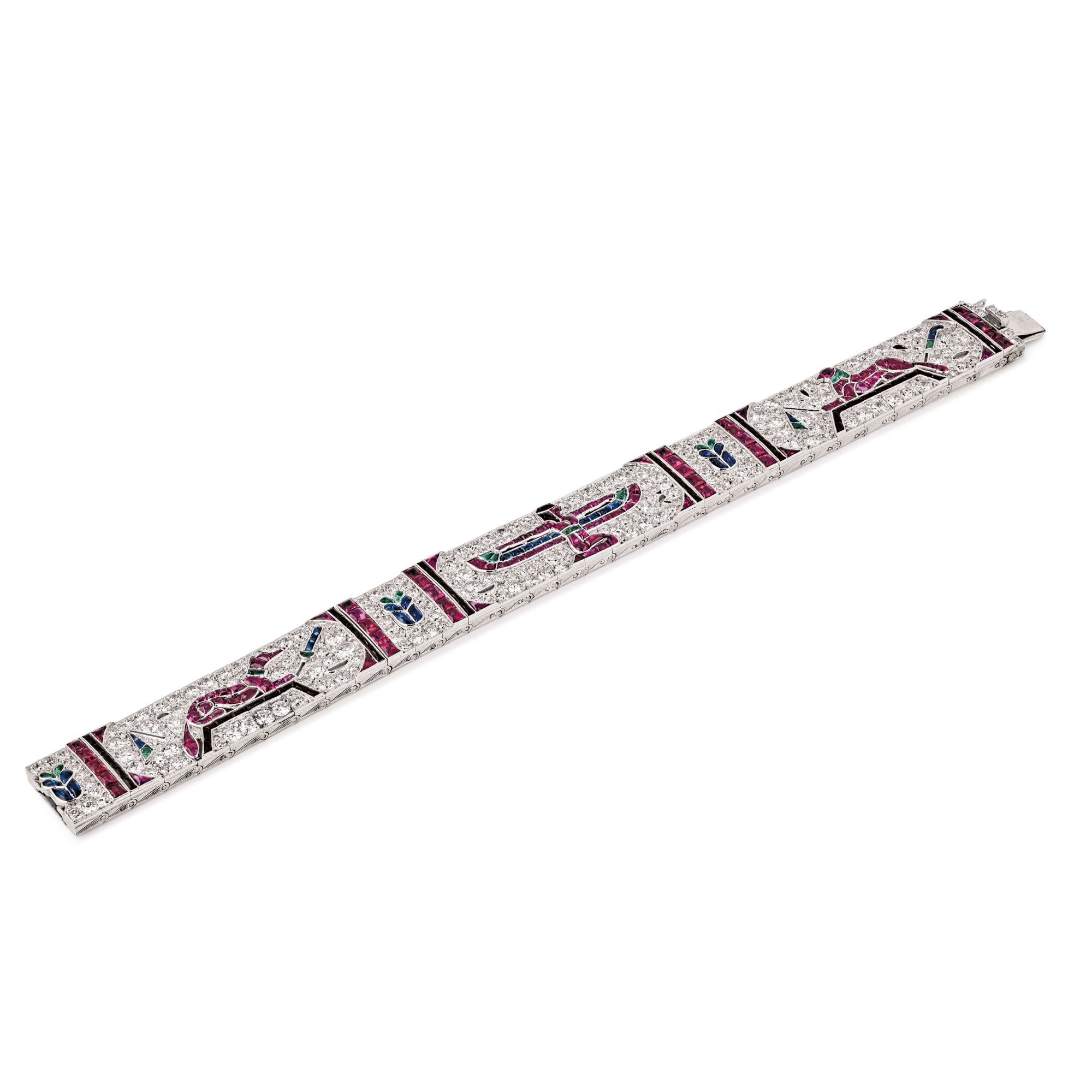
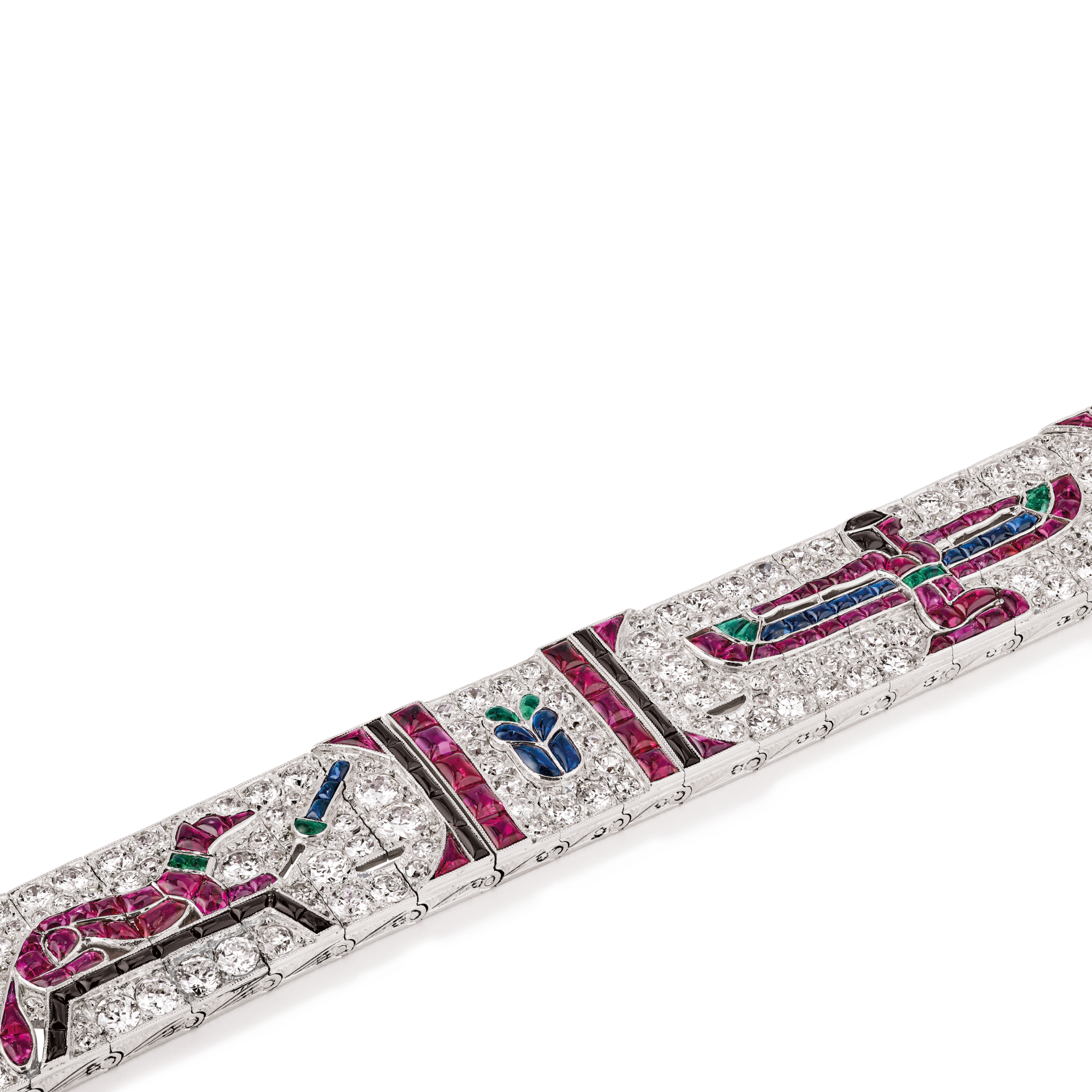
Creation details
- Creation year 1924
- Stone Diamond
- Stone Emerald
- Stone Onyx
- Stone Ruby
- Stone Sapphire
- Material Platinum
- Usage Bracelet
- Dimensions 180 × 14 mm
This band bracelet, designed by Van Cleef & Arpels in 1924, illustrates a revival of Egyptomania in the 1920s. An ornamental repertoire inspired by Ancient Egypt unfurls across a background of pave-set diamonds.
The decor is composed of buff-top cabochon gems that contrast with prong-set brilliants and fine openwork motifs. In the middle of the composition, a female figure set with rubies and onyx hair spreads her ruby, sapphire, and emerald wings. She is framed by two registers featuring a dog on one side and a chimeric creature with a falcon’s head on the other. Both are seated on a pedestal of onyx flanked by a crook and flail, the attributes of pharaohs. Each register is bordered by a row of buff-top cut rubies as well as a thinner row of onyx and two ruby triangles marking the corners. A palmette motif in sapphires and emeralds appears between these frames. Although highly stylized, the central figure would appear to represent the goddess Isis, while the two creatures with animal silhouettes could be said to resemble the zoomorphic divinities Anubis and Horus.
Egyptian pattern bracelet
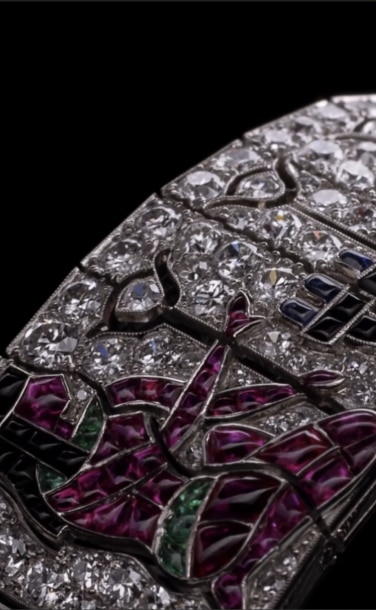
A jewelry set inspired by Ancient Egypt
Egyptomania in the 1910’s and 1920’s
Ancient Egypt inspired an entire ornamental vocabulary. In 1908, the first performance of the Ballets Russes was dedicated to Cleopatra.
The development of silent films with stories of dreamy Oriental myths contributed to popularizing the last Egyptian queen, most notably the film by James Gordon Edwards, Cleopatra, that appeared in 1917.
The discovery of Tutankhamun’s tomb
And finally, the archeological excavations led by Lord Carnarvon, who brought to light the funerary complex of King Tutankhamun in 1922 reinforced this new fascination with Egypt.
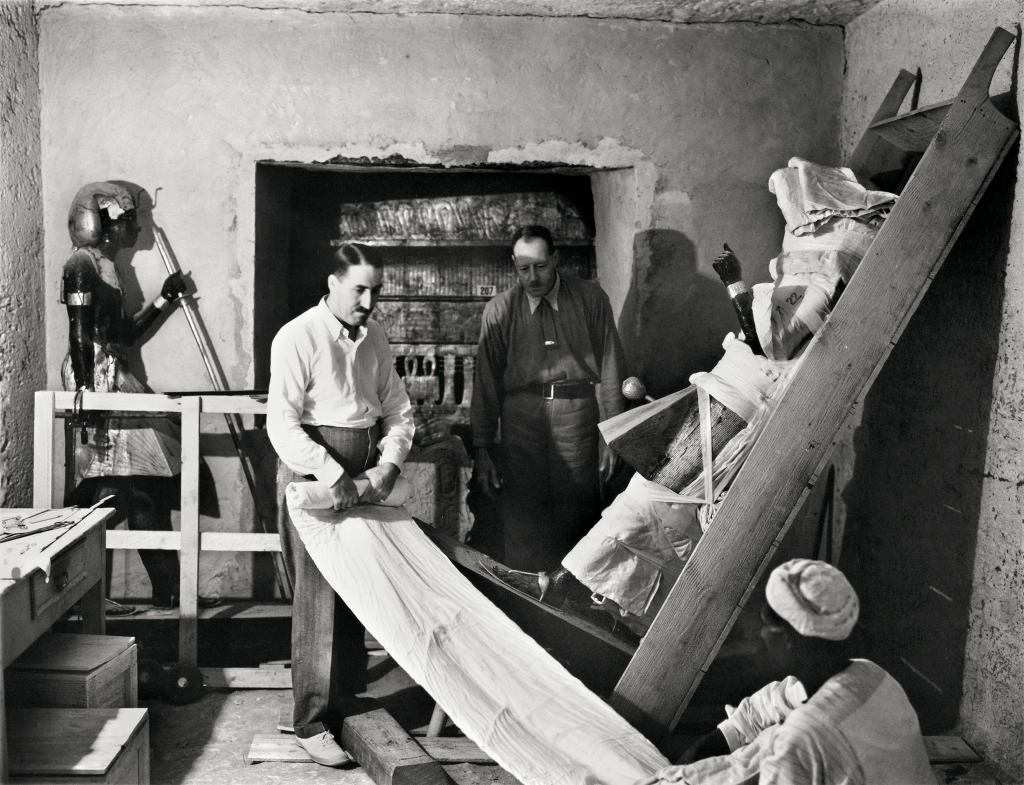
To go deeper
